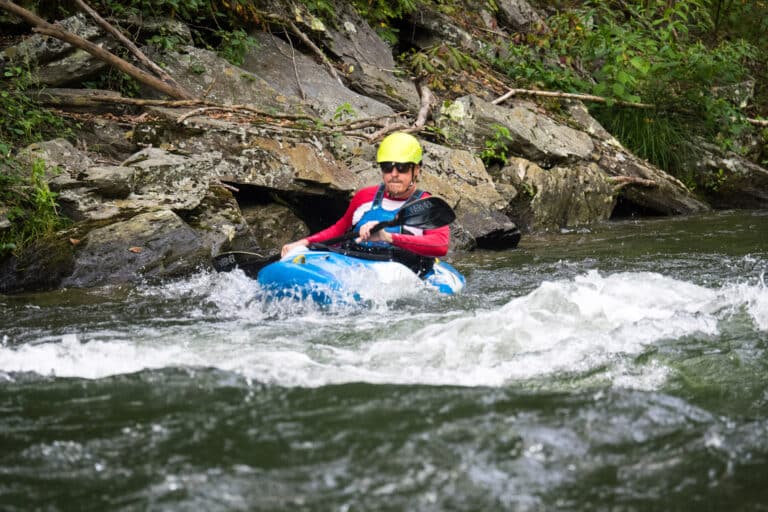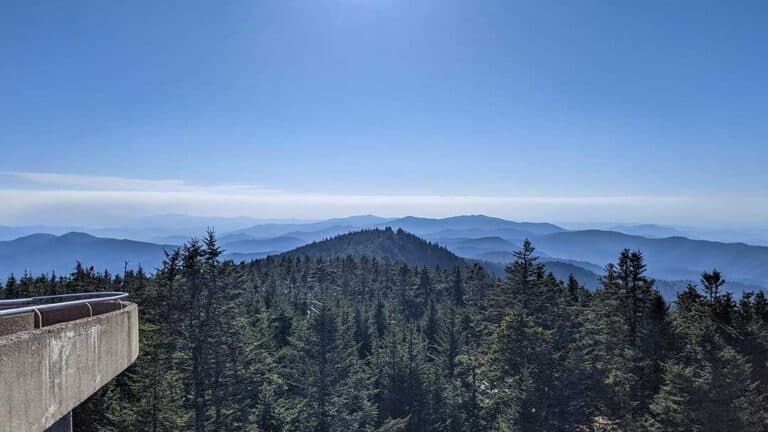When Jerry Beckwith was asked how he succeeded in winning multiple marathons and triathlons across the Southeast, he answered, “I learned how to suffer.” Every April, at the peak of the spring bloom, a group of kayakers and road bikers gather near Saluda, N.C., to honor Jerry in a race that epitomizes these words.
Jerry’s Baddle is a biathlon that sends racers down four miles of some of the steepest whitewater on the East Coast, then punishes them on a road-bike loop that winds up and down the precipitous grades of the Green River Gorge. This is the type of fringe competition that Southeastern boaters are famous for cooking up, but the Baddle was the first event to combine hairball boating with an endurance sport such as road biking.

“When I think about how to grow the number of competitors here, I always come up against the fact that there is an extremely small percentage of people who are capable of paddling the Narrows as well as biking 25 miles with 4,000 feet of climbing,” says race director Brooks Saucier.
The race begins in a remote eddy on the Green River where competitors mill about, nervously awaiting their turn on the course. Every minute, a new racer leaves the starting line and paddles alone into the class V+ Green River Narrows where they sprint through rapids that give pause to skilled boaters even under normal conditions. By the time the racer reaches the famous and much-feared Gorilla rapid (about ten minutes in), a crowd of spectators has gathered along the riverbanks to witness the excitement. Here the river pinches through a narrow slot and then plunges over a ten-foot waterfall. At this year’s event there was no shortage of drama: two subluxed shoulders, one upside-down run of the falls, and a handful of swimmers (making the race a triathlon for those unlucky few).
A bit farther downstream, racers paddle off (or portage) twelve-foot Sunshine Falls, leaving the scariest part of the river behind them. But they still have over two miles of exhausting class IV whitewater to paddle before transitioning to the bike leg and immediately tackling a 1,000-foot climb up the winding switchbacks of the Green River Gorge. Twenty-five exhausting miles later, they arrive back at the banks for the Green River, physically depleted and ready to enjoy the post-race festival.
What draws people to such masochism? The extraordinary vividness and sense of vitality that comes from pushing the limits of one’s mind and body. This vitality typified the life of Jerry Beckwith. Shortly before being diagnosed with Lou Gehrig’s disease, he realized that something was wrong in his body. So he cashed in his accumulated vacation time and traveled overseas to watch Lance Armstrong race in the Tour de France. Before returning home, Jerry rode his own bike on the Tour de France roads. It was a typical move for Jerry: faced with the looming threat of a fatal condition, he opted to take a once-in-a-lifetime trip and squeeze the utmost enjoyment out of his body before it declined.
ALS (Lou Gehrig’s Disease) is a neurodegenerative disease that attacks the nervous system and causes the body’s muscles to atrophy. During its five years of existence, Jerry’s Baddle has raised about $40,000 for ALS research.
Although ALS is a relatively rare condition, there are numerous inspiring stories of people who have faced it with courage and hope, most famously Stephen Hawking and Yankees baseball star Lou Gehrig. Jerry Beckwith was no exception. Even as the muscles throughout his body weakened, Jerry maintained his sense of humor and a positive attitude that left a deep impact on the community around him.
“He was a member of the clean plate club of life—a guy who always pushed his limits and who strived to get the most out of each day,” recalls Saucier.
Although Jerry possessed an adventuorus and courageous spirit, he also knew his limits. Despite several hundred trips down the Green, he never ran Gorilla. Arriving at that rapid each day he was on the river, Jerry got out of his boat to portage and reliably said, “I’ll run it next time.” This became a running joke between Jerry and his friends, and this story perhaps more than any other has shaped the philosophy of the Baddle. As intense as the race can be, the focus of the day is on savoring life and safely enjoying the physical test. Third-year racer Gareth Tate describes the Baddle in these words: “This event encapsulates Jerry’s whole approach to life. Even when he was diminished in his abilities. he would give the best that he could. It wasn’t necessarily about being the fastest. Jerry was a classic, local Green boater, and he never ran Gorilla. That’s awesome!”
Many of those who race in the Baddle are not interested in testing themselves on the hardest rapids of the Green. But they participate anyway, taking the time to exit their boats and walk around any rapid that is more than they wish to bite off. It’s a novel approach to racing, requiring a brief pause amid the intensity of competition. Those boaters who choose to exit their boats and thread their way through the crowd at Gorilla need only look down to find a reminder of the spirit of this day. Anchored into the rock they walk across is a bronze plaque bearing a footprint and the words: “I’ll run it next time.”
MY PERSONAL BADDLE
I participated in the Baddle this year for the second time. After an inauspicious race my first year (running Sunshine upside down and backwards), I had no shortage of nerves weighing on me as I waited for my turn at the starting line. In situations of stress, my mind plays the avoidance game, flitting around and landing on any subject except the frightening task at hand. After I left the starting line and was alone on the river, I tracked my mind wandering through a strange mix of thoughts: “I wonder how the pictures I took will turn out . . . I need to buy seeds for the garden tomorrow.” But as I neared the Monster Mile of the Narrows, where the cascades are stacked back-to-back and the foreboding Gorilla looms like a visit to the principal’s office, my mental focus began to ratchet down to the current in front of me, and the crowd’s yells became like echoes in the periphery of my mind. I experienced this same mental focus again later that afternoon as I drafted on my bike down the Saluda grade behind my friend and fellow racer Joey Jarrell, flying towards the finish.
Chris Gallaway is director of the award-winning documentary The Green Race Movie. Watch a video-slideshow from this year’s Jerry’s Baddle at RapidTransitVideo.com







